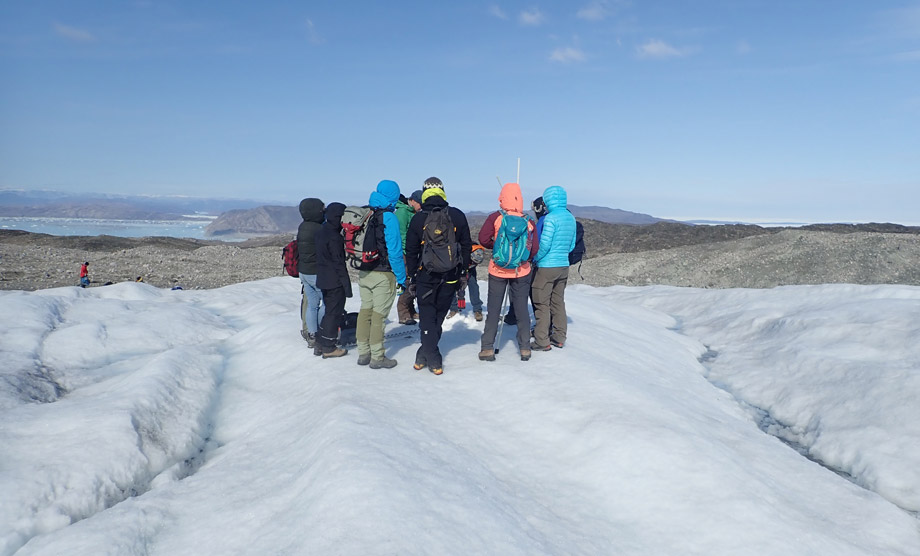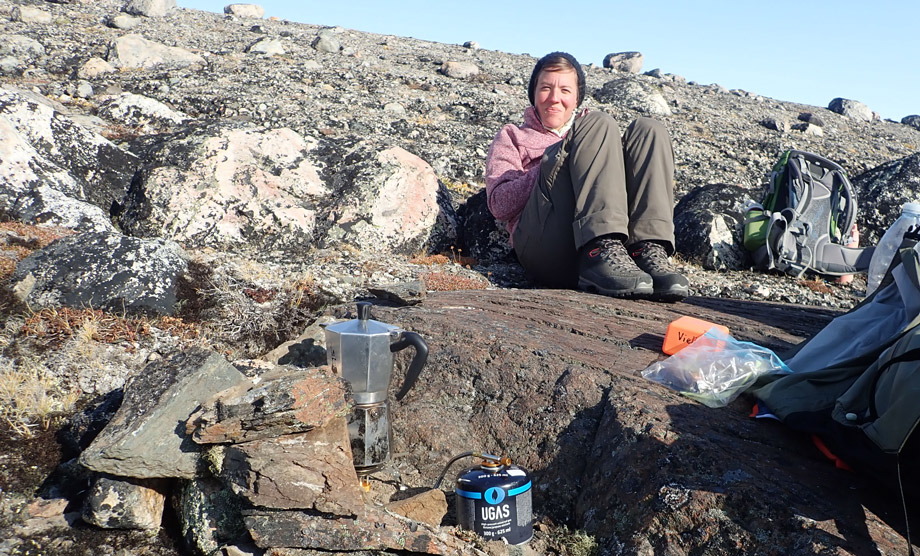#13: Ice age coffee
On our excursion to Greenland with students in August 2019, we found ice that dates back to the last ice age - and made coffee from it!
The Greenlandic ice sheet still contains large amounts of ancient ice. During the last Ice Age about 100,000 years ago it fell as snow and was transformed under high pressure into glacial ice. This old ice usually lies at the bottom of the ice sheet, and can only be reached by drilling boreholes more than a thousand metres deep. Such ice is very valuable because it is used to analyse the ice age climate.
We found a large deposit of very old ice on the edge of the ice sheet. There, it slowly melts away, only partially protected by debris against solar radiation. We systematically took samples of this ice and found that it clearly stems from the last ice age. This was proven by laboratory analyses of the water isotopes, i.e. the weight of the water molecules.
During our excursion to Greenland last August, we afforded ourselves the pleasure of melting this ice for our coffee. There is enough of it, and we were able to get it easily with the ice axe. The taste of the coffee? Not a bit old, just like ice (age) coffee!
Martin Lüthi

